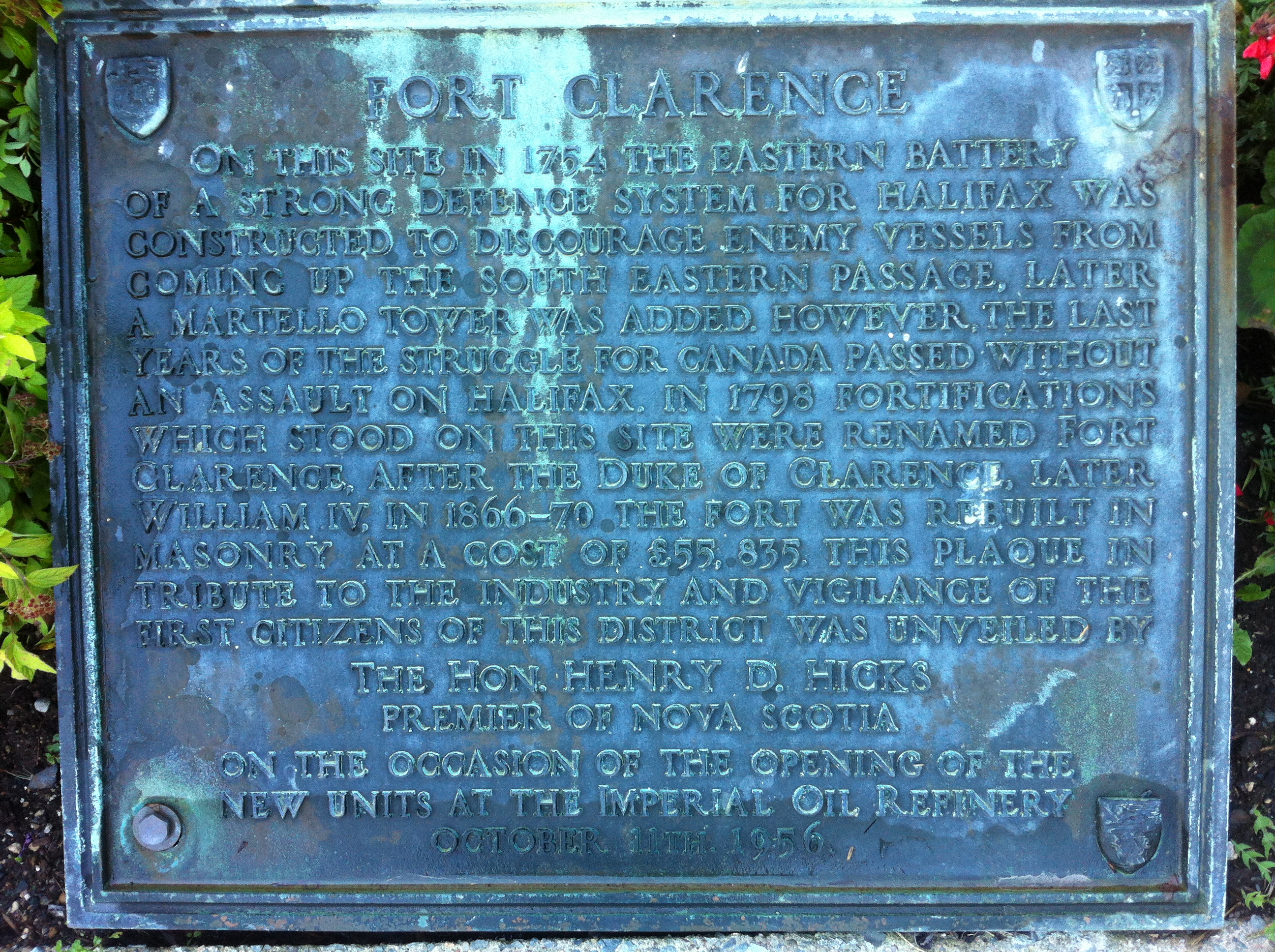Fort Clarence (Nova Scotia) on:
[Wikipedia]
[Google]
[Amazon]

 Fort Clarence (formerly the Eastern Battery) was a British coastal fort built in 1754 at the beginning of the
Fort Clarence (formerly the Eastern Battery) was a British coastal fort built in 1754 at the beginning of the
"The History of The Townships of Dartmouth, Preston and Lawrencetown, Halifax County, Nova Scotia"
p. 16
Fort Clarence
Images of Fort Clarence during American Civil War
{{coord, 44.6399, -63.5401, type:landmark_region:CA-NS, display=title Military history of Nova Scotia History of Halifax, Nova Scotia Military forts in Nova Scotia

 Fort Clarence (formerly the Eastern Battery) was a British coastal fort built in 1754 at the beginning of the
Fort Clarence (formerly the Eastern Battery) was a British coastal fort built in 1754 at the beginning of the French and Indian War
The French and Indian War (1754–1763) was a theater of the Seven Years' War, which pitted the North American colonies of the British Empire against those of the French, each side being supported by various Native American tribes. At the s ...
in Dartmouth, Nova Scotia
Dartmouth ( ) is an urban community and former city located in the Halifax Regional Municipality of Nova Scotia, Canada. Dartmouth is located on the eastern shore of Halifax Harbour. Dartmouth has been nicknamed the City of Lakes, after the larg ...
, Canada. The battery was built on the grant of Capt. John Rous
John Rous (21 May 1702 – 3 April 1760) was a privateer and then an officer of the Royal Navy. He served during King George's War and the French and Indian War. Rous was also the senior naval officer on the Nova Scotia station during Father L ...
. Initially it had 8 guns mounted. In spring 1759, a Mi'kmaq attack on the Eastern Battery killed five soldiers.
On 17 November 1778, the King's Orange Rangers arrived by sea at Halifax.Leefe (1996), p.4. The reason for the transfer was probably to stem desertions by relocating the men to a place much farther away from their homes. The KOR was assigned to protect the Eastern Battery on the shore of Halifax harbour at the south end of Woodside, where the neighborhood of Imperoyal now exists.
Eastern Battery was renamed Fort Clarence by Prince Edward on 20 October 1798 in honor of his brother, the Duke of Clarence and St. Andrews, later King William IV
William IV (William Henry; 21 August 1765 – 20 June 1837) was King of the United Kingdom of Great Britain and Ireland and King of Hanover from 26 June 1830 until his death in 1837. The third son of George III, William succeeded ...
. In the late 1790s, a Martello tower
Martello towers, sometimes known simply as Martellos, are small defensive forts that were built across the British Empire during the 19th century, from the time of the French Revolutionary Wars onwards. Most were coastal forts.
They stand up ...
replaced the blockhouse. The fort was rebuilt with stone in the 1860s.
In 1929, Imperial Oil
Imperial Oil Limited (French: ''Compagnie Pétrolière Impériale Ltée'') is a Canadian petroleum company. It is Canada's second-biggest integrated oil company. It is majority owned by American oil company ExxonMobil with around 69.6 percent o ...
purchased the site which became part of its Dartmouth Refinery and the remaining parts of the fort were buried in the 1940s. The refinery was converted to an oil storage depot in 2013 and archeologists are calling for the fort to be excavated.
See also
*Military history of Nova Scotia
Nova Scotia (also known as Mi'kma'ki and Acadia) is a Canadian province located in Canada's Maritimes. The region was initially occupied by Mi'kmaq. The colonial history of Nova Scotia includes the present-day Canadian Maritime provinces and the ...
* Military history of the Mi’kmaq people
A military, also known collectively as armed forces, is a heavily armed, highly organized force primarily intended for warfare. It is typically authorized and maintained by a sovereign state, with its members identifiable by their distinct ...
* Royal Naval Dockyard, Halifax
Royal Naval Dockyard, Halifax was a Royal Navy base in Halifax, Nova Scotia. Established in 1759, the Halifax Yard served as the headquarters for the Royal Navy's North American Station for sixty years, starting with the Seven Years' War. T ...
References
Further reading
* John G. Leefe, ''"History of the Royal Provincial Regiment King's Orange Rangers'' * Mrs. William Lawson"The History of The Townships of Dartmouth, Preston and Lawrencetown, Halifax County, Nova Scotia"
p. 16
External links
Fort Clarence
Images of Fort Clarence during American Civil War
{{coord, 44.6399, -63.5401, type:landmark_region:CA-NS, display=title Military history of Nova Scotia History of Halifax, Nova Scotia Military forts in Nova Scotia